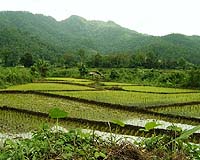 |
San Diego CA (SPX) Sep 22, 2009 The single largest year over year potential increase in the industrial age of food production may occur with the use of a San Diego based alternative energy company's machinery. Circle Biodiesel and Ethanol Corporation has announced that their latest patent-pending machinery design enables previously inedible foods such as toxic strains of algae and Jatropha to be edible with an operation that can occur in less than four hours. CEO Peter Schuh has calculated, using figures based on landmass and ocean acreage, the potential for the huge increase in production. "Many algae and other plants that were inedible should now be edible. We believe we are in a great situation to help on the growing concern for world food production," says Peter Schuh. "We have devised an apparatus and method for the production of humanly edible food from algae, Jatropha and other currently toxic feedstocks. In the case of Jatropha, the feedstock is purged of two primary toxins, phorbol esters and lectin, that give the plant its disease and pest resistance. In the past, these toxins prevented use in human and animal nutrition," said Allen J. Schuh, Ph.D. The procedure was developed by the Schuhs after years of research. The added ability of producing a protein-rich meal for human and animal consumption enhances the potential of Jatropha as an economically viable feedstock for fuel and human consumption. "We believe that many other plants such as Castor Beans, Jojoba Beans, and Indian Beech can be detoxified with this apparatus and methodology, and then safely eaten," said Schuh. The final edible product is suitable for storage or consumption. It is rich in nutrients and protein and relatively low in carbohydrates and fats. In preprocessing, the carbohydrates are removed for ethanol production, and the oil is removed for biodiesel production. The oil-less cake has the texture of soy meal and can be used as a substitute for soy meal in various recipes, including pastry, desserts, soups, salads, or as a main course. Share This Article With Planet Earth
Related Links Circle Biodiesel and Ethanol Farming Today - Suppliers and Technology
 Thai rice region under climate threat: Greenpeace
Thai rice region under climate threat: GreenpeaceBangkok (AFP) Sept 21, 2009 Part of Thailand's main rice growing region is under severe economic and environmental threat from climate change which must be addressed by world leaders at a UN summit, Greenpeace said Monday. A study by the activist group revealed the dangers faced by the Bangpakong River Basin, which supports around 1.25 million people who rely heavily on the region's fertile soils for crops, especially ... read more |
|
| The content herein, unless otherwise known to be public domain, are Copyright 1995-2009 - SpaceDaily. AFP and UPI Wire Stories are copyright Agence France-Presse and United Press International. ESA Portal Reports are copyright European Space Agency. All NASA sourced material is public domain. Additional copyrights may apply in whole or part to other bona fide parties. Advertising does not imply endorsement,agreement or approval of any opinions, statements or information provided by SpaceDaily on any Web page published or hosted by SpaceDaily. Privacy Statement |